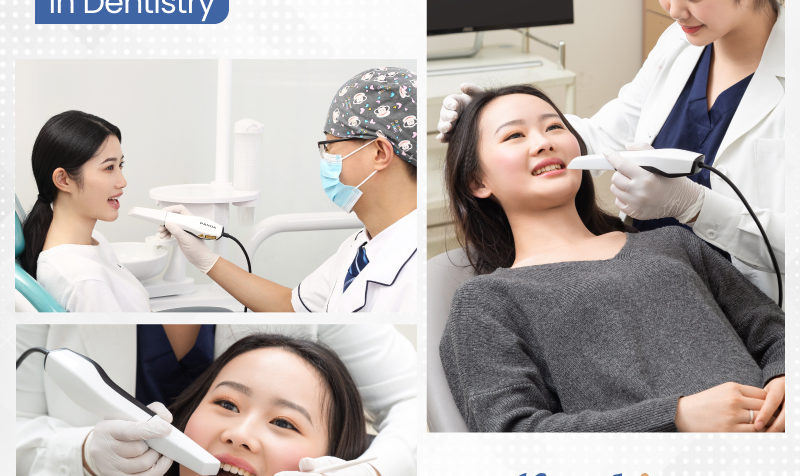Since the advent of the intraoral scanner device in the early 90s, it has greatly improved and diversified, and has revolutionized the world of dentistry in a plethora of ways.
The digital impressions created out of this scanner have certainly resulted in higher accuracy and changed the relationship between the dentist and the lab. The scanners are user-friendly as well as healthier and safer for the patients since there are no choking hazards. Such scanners have done a world of good for both patients and dentists.
However, before we discuss about the benefits, let’s quickly take a look at the variety of options available in the market.

Options available for intraoral scanners
A number of scanners are available in the market with new models being introduced from time to time. Some scanners are powder-free while others require the application of powder sprays for scanning the teeth. The powder-free scanners are available both in color and monochromatic options.
Nowadays, you’ll find wireless models while some are tethered to a workstation via a cable or USB. Along with the scanner, you’ll also find a base station that operates the software and delivers the 3D images captured by the scanner.
The price of the scanner will entirely depend on the kind of model you have selected. For instance, models packed with premium features will cost you more than the others. In a nutshell, there are myriad choices to create your digital workflow.
Reasons why dental scanners are on the rise
There has been a surge in the utilization of a 3D dental scanner due to various reasons. The traditional method of obtaining dental scans had many flaws like:
- Time-consuming
- Patients were not comfortable
- Results were inaccurate
- Leaving an unpleasant aftertaste in the mouth
Benefits of dental scanners to dentists and the patients:
3D scanners used in the dental industry are highly beneficial to both the entities – dentists and patients. Let’s take a look at how these scanners prove to be advantageous.
Patients:
- These scanners have proved to be time savers. Patients don’t have to wait for long to get treatment.
- The process is safe for the patients as no harmful radiation is emitted.
- The results are accurate in the sense that they capture the exact shape of the teeth thus enabling better diagnosis.
- Unlike the old methodology, digital scanners have proved to be highly comfortable as the process takes hardly a few minutes.
Dentists:
- Dentists can treat more patients in a short period since the process is fast as compared to the traditional technique of diagnosis.
- The technology is efficient thereby allowing dentists to treat their patients in a short time while conducting accurate diagnosis.
- The results are accurate since 3D technologies are used to capture the exact structure of the teeth. An accurate picture of the buccal cavity helps dentists to diagnose better and administer suitable treatment.
- The process is simple and flexible. If the dentist is unsatisfied with the impressions, he or she has the freedom to delete and recapture the image.
Final thoughts
In a nutshell, the 3D dental scanner has been applied in different areas of dentistry. Though it is mainly used for diagnostic purposes, it can also be used in areas like prostheses, prosthodontics, and surgery. We can definitely say that these scanners have been able to deliver better patient experiences and improve footfall at dental clinics.






